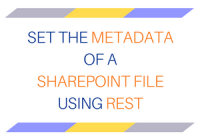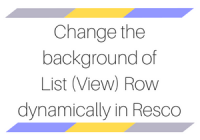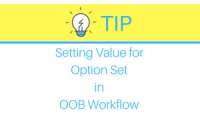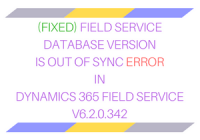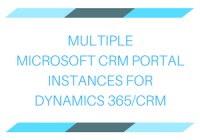Category Archives: Dynamics 365
Change the background of List Row dynamically in Resco
Introduction: We had a business requirement to change the background color of the List Row based on the status of the record i.e. change the background color of List Row to red if the record status is inactive. Steps to change the background color of List Row: 1. In Resco Woodford project, go to the… Read More »
Microsoft Flow – Create record in Dynamics 365 using Gmail Connector
Introduction: Recently we received a requirement to integrate a mailbox not configured in CRM and external to CRM with Dynamics 365. The client had an enquiry mailbox, and they did not want the emails to be created in CRM, and therefore it was not configured. However, they did want that the lead should be automatically… Read More »
Configure Delete Record on Entity List in Microsoft Portal
Introduction: Entity List allows users to show the lists of records in Microsoft Portal. Recently, we had a business requirement to configure Delete record on the Entity List in Microsoft Portal. Configuring actions for Entity List is similar to configuring actions for Entity Form. Steps to configure Delete records from Entity List Grid: 1. Go… Read More »
TIP: Setting Value for Option Set in OOB Workflow
Introduction: Recently we had a business requirement to maintain Opportunity Status change history. So, to achieve this, we created a custom entity and developed the OOB workflow to create a custom entity record and Send an email to the owner. First, we created a custom entity ‘Opportunity Status History’ with the below-mentioned fields; 1. Opportunity… Read More »
Remove New Registration Process completely from Microsoft CRM Portal
Introduction: Microsoft CRM portal allows organizations to set up their portal with minimal steps. However, the organization may require customizing a portal to accommodate their business needs. One common business need is whether the portal should have the ability to register a new user or not. When we install the Portal add-on, by default, the… Read More »
Fixed – Field Service database version is out of Sync error in Dynamics 365 Field Service V6.2.0.342 [Part 2]
When we had faced this issue originally, the solution provided below worked well and it didn’t look to break any other components of Field Service. But having used the system for many months now, we have discovered that approach described below actually breaks some internal components of Field Service and causes issues in the long… Read More »
Tip – Setting Your Own Default View in Dynamics 365
Introduction: Microsoft Dynamics 365 provides lots of customization options for organizations to customize the system based on their business needs. Organizations can also customize the Default View that their users will see when they log in. However, in many cases, the users might feel the need to set their Default view i.e. personal settings for… Read More »
Multiple Microsoft CRM Portal Instances for Dynamics 365/CRM
Most often asked question is if one CRM can be used to host multiple portals? When you go through the deployment admin screen for CRM, you have the option to install multiple Portals; you are free to install Customer Portal as well as Partner Portal. This will go ahead and deploy the solution components and… Read More »
Microsoft Portal Configuration Issues
Introduction: Microsoft Portal is easy to configure. However, sometimes we face issues even after correctly configuring the Portal, and it might take a lot of time to identify the issue and solve it. In this blog, we will explain some of the issues that we faced while configuring the Portal Web Pages, Entity Form and… Read More »
